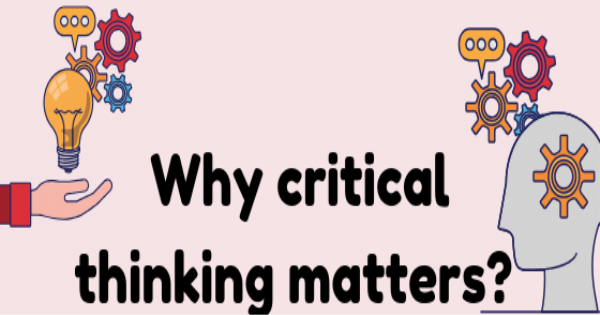What is a CV?
Curriculum Vitae an outline of a person's educational and professional
history, usually prepared for job applications.
A CV is the most flexible and convenient way to make applications. It can convey your personal details in the way that presents you in the best possible light and can be used to make multiple applications to employers in a specific career area. For this reason, many large graduate recruiters will not accept CVs and instead use their own application form. An application form is designed to bring out the essential information and the personal qualities that the employer requires and does not allow you to gloss over your weaker points as a CV does. In addition, the time needed to fill out these forms is seen as a reflection of your commitment to the career and the company.
There is no "one best way" to construct a CV; it is your document and can be structured and presented as you wish within the basic framework set out below. It can be set out on paper or on-line or even on a T-shirt (a gimmicky approach that might work for “creative” jobs but is not generally advised!).
When should a CV be used?
- When an employer asks for applications to be received in this format
- When an employer simply states "apply to..." without specifying the format
- When making speculative applications (i.e. when writing to an employer who has not actually advertised a vacancy but who you hope my have one)
What information should a CV include?
- CV Heading (Don't write curriculum Vitae or CV in heading)
- Just start with your Name in capital, Large & Bold font and then write your Address, Email, Contact details with normal font, Don't hesitate to put your latest photo on the right side)
- Personal Profile (Write 1 or 2 lines about about your goals)
- Personal details (Put your decent passport size color photo)
- Education & qualifications (Latest qualification always comes at top)
- Diploma / Certificate (optional)
- Work experience (Not for Fresh Job seekers)
- Skills (Carefully write about your skills & don't go beyond the limit)
- Interests and achievements (optional)
- Reference (Don't give a reference until employer ask for it)
The order in which you present these, and the emphasis which you give to each
one, will depend on what you are applying for and what you have to offer. For
example, the lists the candidate's relevant work experience first.
If you are applying for more than one type of work, you should have a different
CV tailored to each career area, highlighting different aspects of your skills
and experience.
A personal profile at the start of the CV can sometimes be effective for jobs in competitive industries such as the media or advertising, to help you to stand out from the crowd. It needs to be original and well written. Don’t just use the usual hackneyed expressions: "I am an excellent communicator who works well in a team...."
You will also need a covering letter to accompany your CV.
What makes a good CV?
There is no single “correct” way to write and present a CV but the following general rules apply:
- It is targeted on the specific job or career area for which you are applying and brings out the relevant skills you have to offer
- It is carefully and clearly laid out: logically ordered, easy to read and not cramped
- It is informative but concise
- It is accurate – in content, spelling and grammar
How long should a CV be?
There are no absolute rules on this but, in general, a new graduate’s CV should cover no more than two sides of A4 paper. If you can summarise your career history comfortably on a single side, this is fine and a one-page CV has many advantages when you are making speculative applications and need to put yourself across as concisely as possible. However, you should not leave out important items, or crowd your text too closely together, in order to fit it onto that single side. However academic and technical CVs may be much longer – up to 4 or 5 sides sometimes.
Tips on presentation
- Your CV should be carefully and clearly laid out – not too cramped but not with large empty white spaces either. Use bold and italic typefaces for headings and important information
- Never back a CV – each page should be on a separate sheet of paper. It’s a good idea to put your name in the footer area so that it appears on each sheet.
- Be concise - a CV is an appetiser and should not give the reader indigestion. Don’t feel that you have to list every exam you have ever taken, or every activity you have ever been involved in – consider which are the most relevant and/or impressive.
- Be positive - put yourself over confidently and highlight your strong points. For example, when listing your A-levels, put your highest grade first.
- Be honest – although a CV does allow you to omit details (such as exam resits) which you would prefer the employer not to know about, you should never give inaccurate or misleading information.
- If you are posting your CV, don’t fold it - put it in a full-size A4 envelope so that it doesn’t arrive creased.
Fonts
Times New Roman is the standard windows “serif” font. A safe bet – law firms seem to like it! A slightly more interesting serif font might be Georgia.
Arial is the standard windows “sans” font. Sans fonts don’t have the curly bits on letters. As you can see it’s cleaner and more modern than Times and also looks larger in the same “point” size (the point size is simply how big the letters are on the page.) However Arial and Times Roman are so common that they’re a little boring or Geneva – these are both common sans fonts.
FONT SIZE is normally 12 points for the normal font with larger
sizes for subheadings and headings or 10 points. My own favourite CV font is
10 point Verdana
14 points is too big – wastes space and looks crude.
and 8 or 9 points too small to be easily readable by everyone, especially in Times New Roman.
Although many people use 12 points, some research on this suggested that smaller point size CVs were perceived as more intellectual!
Targeting your CV
If your CV is to be sent to an individual employer which has requested applications in this format, you should research the organisation and the position carefully.
If your CV is to be used for speculative applications, it is still important to target it – at the very least, on the general career area in which you want to work. This will enable you to tailor the CV to the work and to bring out your own relevant experience.
Even if you are using the same CV for a number of employers, you should personalise the covering letter – e.g. by putting in a paragraph on why you want to work for that organisation.
- Many employers who accept applications in CV format are happy for you to send your CV as an attachment to an email.
- Put your covering letter as the body of your email. It’s probably wise to format it as plain text (use the format heading on Outlook Express to do this), as then it can be read by any email reader.
- Your CV is then sent as an attachment, normally in MS Word format, but html and PDF format are acceptable alternatives. Also say you’ll send a printed CV if required.
- Email it back to yourself first to check it,
Best of Luck...!




.gif)







































